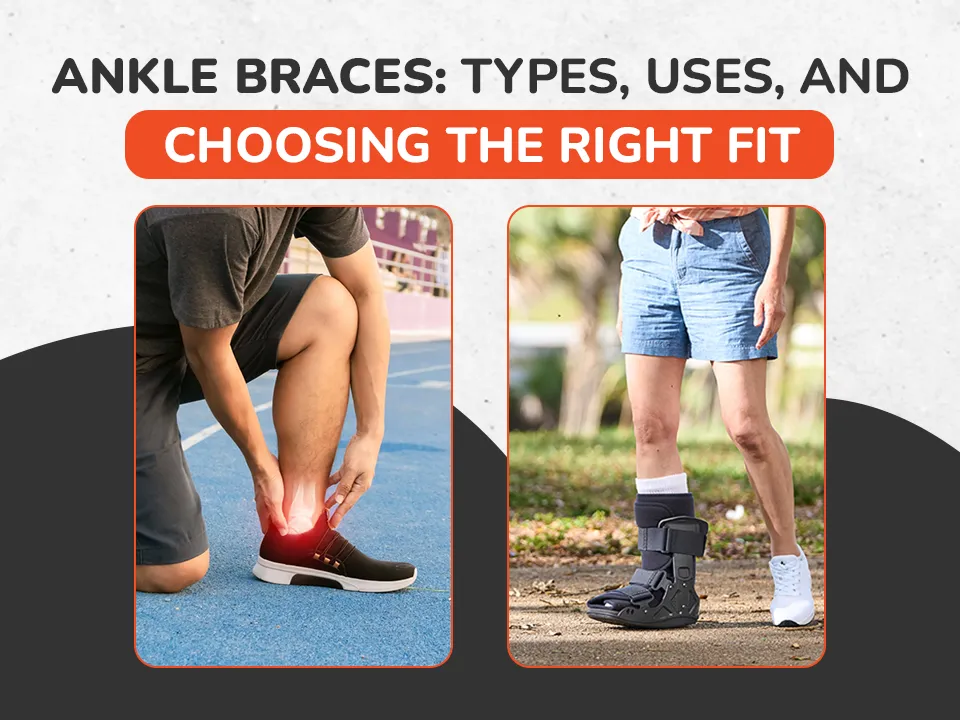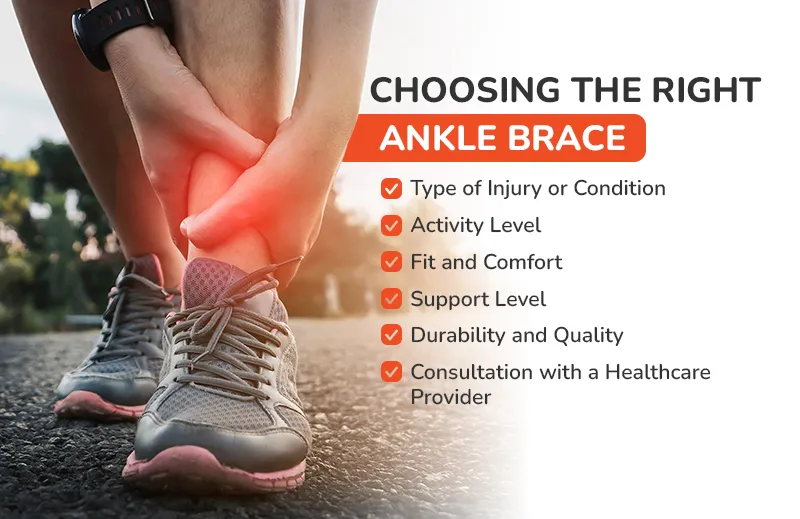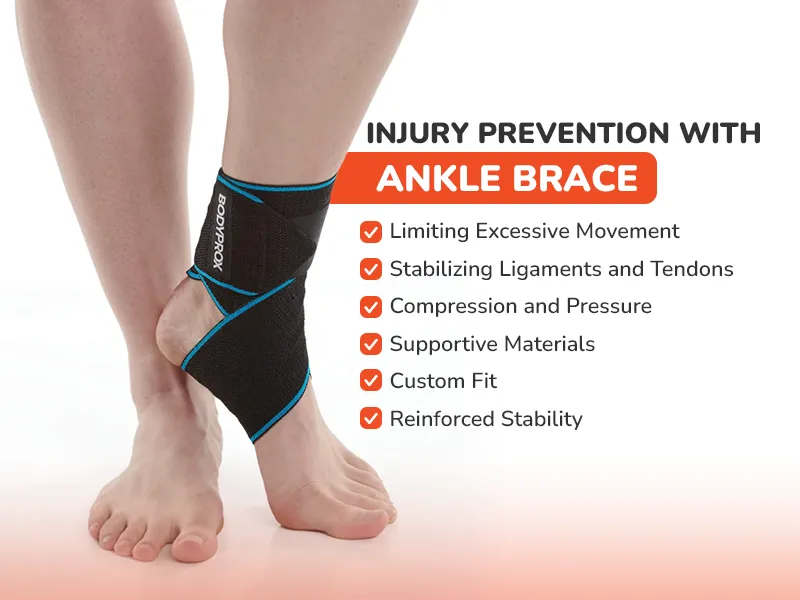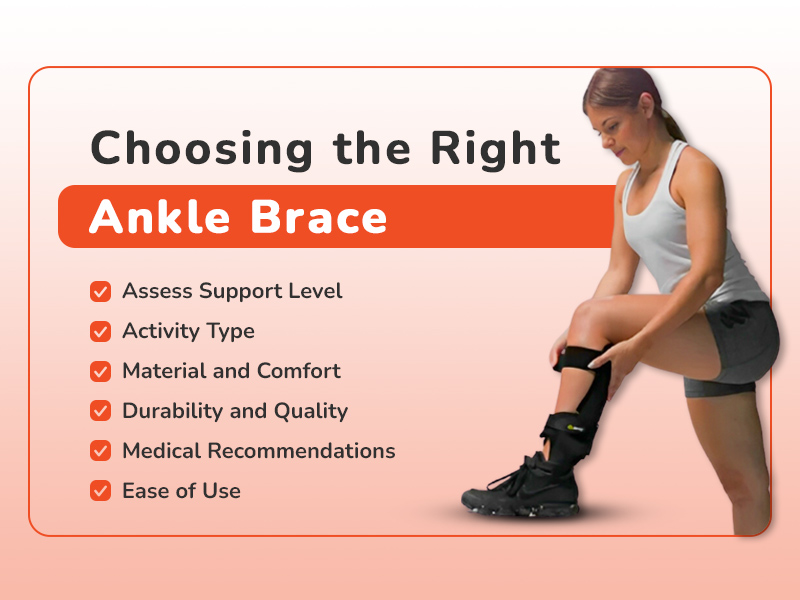How to Properly Wear and Care for Your Ankle Braces?
Ankle braces are essential tools for managing injuries, preventing re-injury, and providing support during physical activity. Whether you’re recovering from a sprain, managing chronic instability, or seeking added protection during sports, ankle braces play a vital role in stabilizing the joint and promoting healing. However, their effectiveness hinges on proper usage and maintenance. An ill-fitted or poorly cared-for brace can not only fail to provide the intended benefits but may also cause additional discomfort or impede recovery progress.
In this article, we’ll walk you through the steps to wear and care for your ankle braces effectively, ensuring they deliver the support you need. Backed by insights from Heal Medical Supply, this guide will help you get the most out of your ankle braces for a healthier, more active lifestyle.
Why Proper Usage Matters?
Ankle braces are more than just supportive gear—they are a critical component of injury prevention and recovery. Properly applied braces provide stability to weakened or injured ligaments, reduce pain, and support the joint during movement. However, their benefits depend on correct application and diligent care. When worn incorrectly, ankle braces can do more harm than good, potentially causing additional strain on other parts of the foot or leg, limiting your range of motion, or even exacerbating the injury they are meant to protect.
Beyond application, maintenance is equally important. A poorly maintained brace may lose its structural integrity, diminishing its ability to provide adequate support. This can compromise your recovery process or increase the risk of re-injury. Proper care not only ensures the durability of the brace but also keeps it hygienic and comfortable, especially for prolonged or frequent use.
By understanding the importance of proper usage and maintenance, you can maximize the effectiveness of your ankle braces, safeguard your recovery, and enhance overall mobility for a healthier, more active lifestyle.
How to Wear Your Ankle Brace Properly?
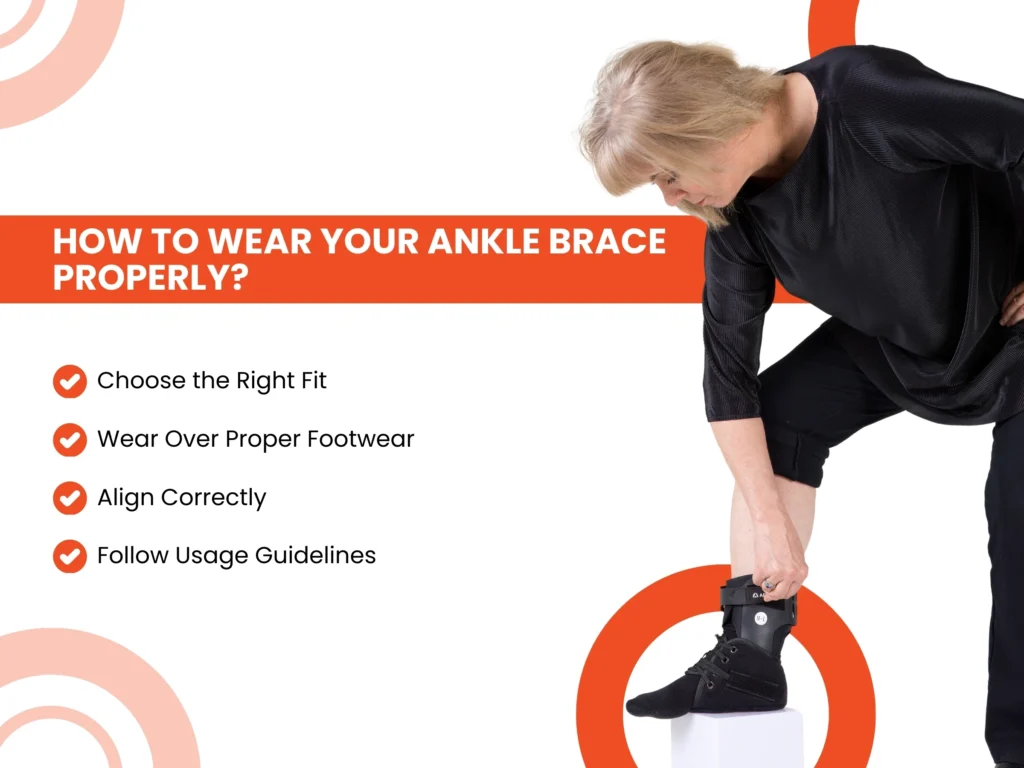
Wearing your ankle brace correctly is crucial for achieving maximum support, comfort, and effectiveness. Here’s a step-by-step guide to help you get it right:
1. Choose the Right Fit
A properly fitting ankle brace is essential for effective support and injury prevention.
- Sizing Matters: An ill-fitting brace can do more harm than good. A brace that’s too tight may restrict circulation, causing discomfort, swelling, or numbness. Conversely, a brace that’s too loose won’t provide the stability your ankle needs.
- Consult Professionals: Don’t guess your size—seek advice from your healthcare provider or the experts at Heal Medical Supply. They can recommend the right type and size of brace for your specific condition, ensuring optimal fit and support.
2. Wear Over Proper Footwear
The combination of your brace and footwear can significantly impact its effectiveness.
- Layering: Always wear your ankle brace over a clean sock. This prevents direct skin contact with the brace, reducing irritation and improving hygiene.
- Compatible Shoes: Choose shoes with enough room to accommodate the brace without causing discomfort. Athletic shoes or those with adjustable straps are ideal for wearing with braces, as they allow for a snug fit without squeezing your foot.
3. Align Correctly
Proper alignment is key to maximizing the brace’s support and preventing further injury.
- Alignment Tips: Make sure the brace is positioned correctly over your ankle joint. Misalignment can lead to discomfort and reduced effectiveness. Many braces have markings or instructions to guide alignment.
- Tightening Straps: Fasten the straps or laces evenly to avoid creating pressure points. The brace should feel snug but not overly tight, allowing for natural movement without compromising stability.
4. Follow Usage Guidelines
Understanding when and how to use your ankle brace ensures it delivers the best results for your specific needs.
- During Activities: Wear the brace during activities that put stress on your ankle, such as walking, exercising, or engaging in sports. This helps stabilize the joint and reduces the risk of injury.
- For Recovery: If you’re recovering from an injury or surgery, follow your doctor’s instructions regarding when and how long to wear the brace. Overuse during inactivity can weaken your ankle muscles.
- Prolonged Use: Avoid wearing the brace for extended periods without medical advice, as over-reliance can reduce natural muscle strength and joint stability.
Caring for Your Ankle Brace
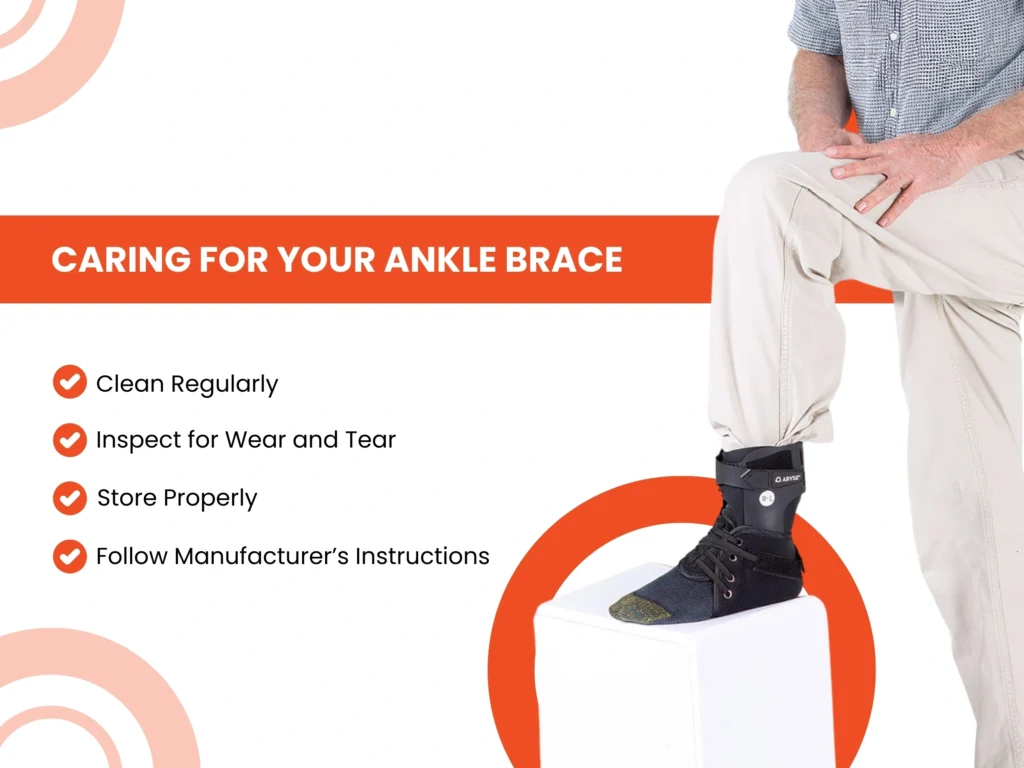
Proper care and maintenance not only extend the life of your ankle brace but also ensure it remains effective in providing support and stability. Here’s how to keep your brace in top condition:
1. Clean Regularly
Keeping your ankle brace clean prevents the buildup of sweat, dirt, and bacteria that can cause skin irritation or unpleasant odours.
- Hand Wash: Use mild detergent and lukewarm water to clean your brace. Gently scrub with a soft brush or cloth to remove debris, especially around straps and support areas. Avoid harsh chemicals that can degrade the material.
- Air Dry: Let your brace air dry completely before wearing it again. Avoid using dryers, direct sunlight, or heat sources like radiators, as excessive heat can weaken elastic and synthetic components, reducing the brace’s effectiveness.
2. Inspect for Wear and Tear
Regular inspection helps identify damage early, ensuring that your brace continues to provide optimal support.
- Check Straps and Fasteners: Examine velcro, laces, or straps for signs of fraying or weakening. Damaged straps may reduce the brace’s ability to stay securely in place.
- Support Structures: Look for cracks, warping, or other damage in rigid braces. If the structural integrity is compromised, it’s time to replace the brace.
- Elastic Materials: Test the elasticity of the brace to ensure it still offers proper compression and support. Worn-out elastic may fail to stabilize your ankle.
3. Store Properly
Proper storage prevents unnecessary damage and keeps your brace ready for use.
- Cool, Dry Place: Store the brace in a well-ventilated area away from humidity and direct sunlight to prevent material degradation.
- Avoid Folding Rigid Braces: Rigid or semi-rigid braces should be stored flat or in their natural shape to maintain their structural integrity. Folding can lead to cracks or permanent deformities.
- Separate from Other Items: Store your brace in a clean space, away from sharp objects or heavy items that could damage it.
4. Follow Manufacturer’s Instructions
Every brace is unique, and adhering to the manufacturer’s guidelines ensures you maintain its functionality.
- Care Instructions: Review and follow cleaning, drying, and storage recommendations provided by the manufacturer.
- Usage Limits: Pay attention to instructions regarding how long and under what conditions the brace should be worn. Overuse or improper care can void warranties or reduce effectiveness.
- Warranty Details: Many braces come with warranties. Proper maintenance often aligns with warranty requirements, ensuring you can replace a defective brace if needed.
Read More: Choosing the Right Ankle Brace: A Guide for Athletes and Active Individuals
Tips for Maximizing Ankle Brace Effectiveness
Proper use of an ankle brace ensures optimal support, stability, and injury prevention. Here’s how to make the most of your brace:
1. Combine with Exercises
- Strength and Stability: Perform ankle-strengthening and balance exercises as recommended by a physical therapist to complement the support provided by your brace.
- Rehabilitation Aid: Include mobility exercises to restore range of motion and build muscle strength after an injury.
2. Wear During High-Risk Activities
- Sports and Workouts: Use your brace during sports, running, or high-impact activities where the risk of sprains or other injuries is higher.
- Physical Labor: If your job involves heavy lifting or uneven terrain, wearing a brace can prevent accidental ankle twists.
3. Monitor Comfort
- Strap Adjustments: Regularly check and adjust straps to ensure a snug yet comfortable fit. Overly tight braces can restrict blood flow, while loose braces may fail to provide adequate support.
- Consult a Professional: If discomfort persists, consult your healthcare provider or a specialist at Heal Medical Supply for alternative solutions or customized braces.
4. Know When to Replace
- Inspect for Wear and Tear: Regularly check your brace for signs of damage, such as fraying straps, loss of elasticity, or structural deformities.
- Loss of Support: Replace braces that no longer provide adequate compression or stability, as worn-out braces can compromise safety.
Who Can Benefit from Ankle Braces?
Ankle braces are versatile tools that cater to a wide range of needs, benefiting various individuals:
1. Athletes
- Injury Prevention: Braces offer support during high-impact sports like basketball, soccer, and running, reducing the risk of sprains.
- Performance Support: They stabilize the ankle without restricting mobility, allowing athletes to perform confidently.
2. Injury Recovery
- Healing Assistance: Ankle braces provide stability and limit motion during recovery from sprains, fractures, or tendon injuries.
- Rehabilitation Support: Braces help prevent re-injury during the critical healing phase.
3. Chronic Conditions
- Arthritis Relief: Braces alleviate pain and provide support for individuals with arthritis or joint inflammation.
- Chronic Instability: For those with weak or unstable ankles, braces offer much-needed stability, preventing frequent sprains and enhancing mobility.
How Heal Medical Supply Supports Your Ankle Health?
At Heal Medical Supply, we are committed to helping you achieve optimal ankle health with products and services tailored to your unique needs. Whether you’re an athlete looking to prevent injuries or recovering from a sprain or fracture, our range of ankle braces and expert support ensures you get the care you deserve.
Why Choose Heal Medical Supply?
1. Diverse Range of Products
- For Every Need: We offer an extensive selection of ankle braces, including those designed for sports performance, post-injury recovery, and chronic conditions like arthritis or instability.
- High-Quality Materials: Our braces are made with durable, breathable materials to ensure comfort and long-term use.
2. Expert Guidance
- Personalized Assistance: Our knowledgeable team is here to help you select the ideal brace based on your condition, activity level, and preferences.
- Custom Fitting: We provide tips on achieving the perfect fit for maximum support and comfort.
3. Educational Resources
- Usage Tips: Access a library of tutorials, care guides, and recommendations to maximize your brace’s effectiveness.
- Rehabilitation Advice: Learn how to pair your brace with exercises and other treatments for enhanced recovery and mobility.
4. Exceptional Customer Support
- Ongoing Care: Whether you need help adjusting your brace or replacing a worn-out product, our customer support team is here to assist.
- Insurance Assistance: We simplify the process of navigating insurance coverage for medical braces, making your journey stress-free.
Conclusion
Properly wearing and maintaining your ankle brace is essential for its effectiveness and durability. By following the steps and best practices outlined in this guide, you can protect your ankle, expedite recovery, and reduce the risk of future injuries.
At Heal Medical Supply, your health is our priority. Explore our comprehensive range of high-quality ankle braces and take advantage of our expert guidance and resources. Whether you’re managing an existing condition or looking to prevent injuries, we’re here to support you every step of the way.


